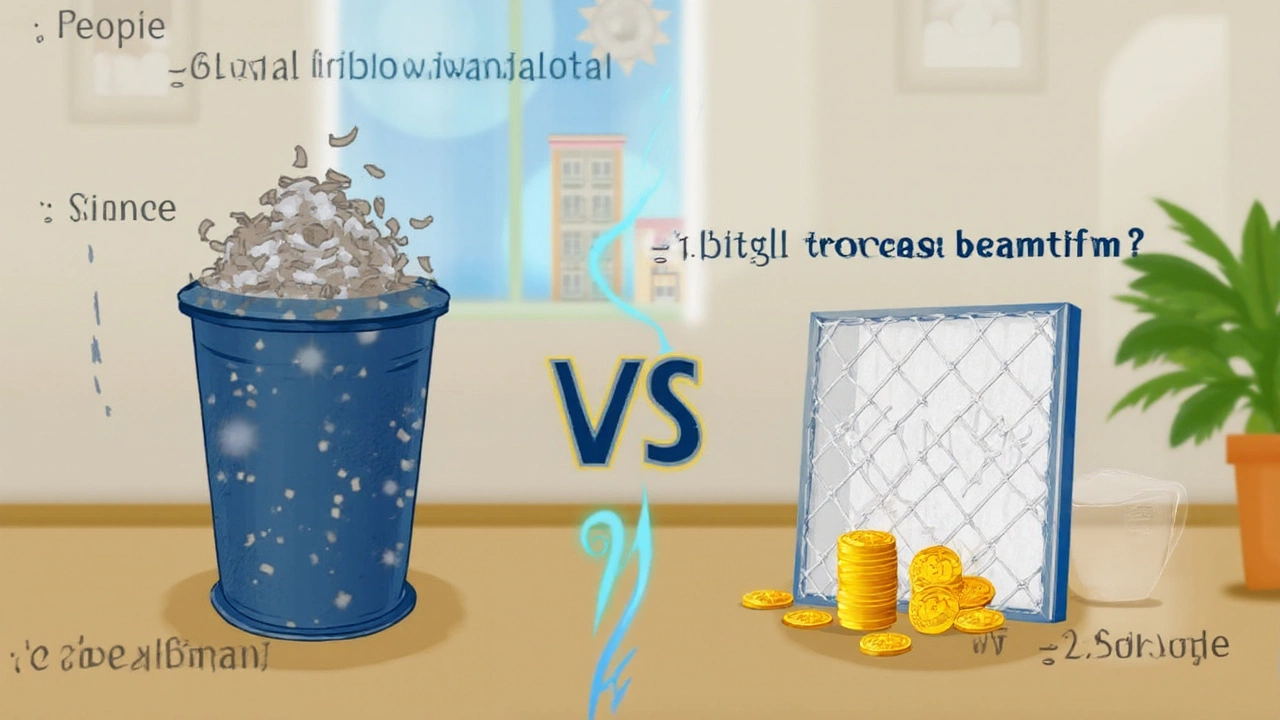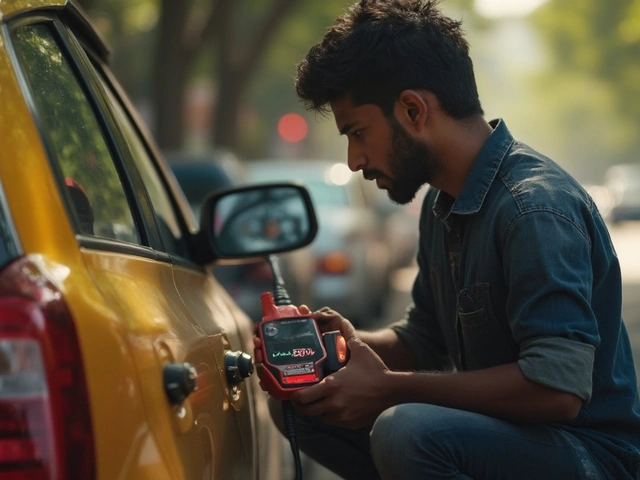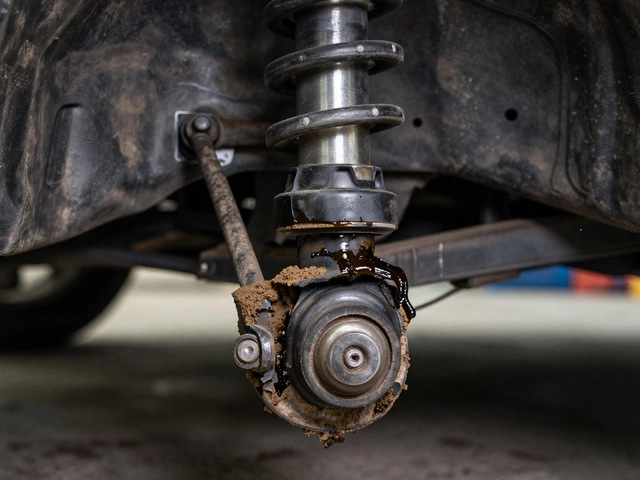
If you’ve ever had to replace the air filter in your car, you’ve probably grumbled at the price and the fact you’re tossing yet another chunk of cardboard and mesh into the rubbish. I get it. It’s frustrating. But is forking out a bit extra at first for a washable filter actually smart in the long run? This topic sparks debates in workshops, garages and, weirdly, even in my local pub in Bristol. You’d be surprised how much people care about this little part hiding under their bonnet.
How Do Washable Air Filters Actually Work?
Here’s the thing—washable air filters usually are made from layered cotton or synthetic material, and they’re hemmed in a sturdy metal or plastic frame. Unlike disposable paper filters, which you have to replace every so many thousand miles, washable ones just need some cleaning and they’re good to go again. Sounds simple, right?
In plain terms, when you’re driving, the filter’s job is to protect your engine’s lungs from dirt, dust, grime, and the other nasties floating about in the air. Clean air in, dirty air out. Every time your engine cycles, it’s sucking in a lot of air, so a quality filter makes a big difference to how well your car runs and how long it lasts.
Now, disposable filters catch small particles using thick, paper-like material. When they fill up, they restrict air flow, so you replace them. Washable filters, on the other hand, use layers of cotton gauze or a synthetic mesh, sometimes soaked in special oil, to grab all the muck efficiently. Since the materials don’t break down from cleaning, you can use the same filter for years. Some brands claim you’re set for a million miles as long as you look after it. Does that sound a bit much? Maybe. But even if you stretch it to 50,000 miles between washes, it’s still a big jump from what most disposable filters can handle.
And get this: because air flows easier through clean cotton or synthetic mesh, some folks reckon you gain a slight increase in horsepower and throttle response. Don’t expect to turn your Vauxhall into a Ferrari, but you might notice a touch more zip, especially in older cars that need every ounce of help they can get. According to K&N Filters, their rechargeable air filters can deliver a modest bump in power—sometimes up to 1-4 additional horsepower, depending on the car and condition of the old filter.
So what stops everyone from switching? Well, it comes down to trust and habit. People are used to the buy-and-chuck cycle and aren’t sure they’ll keep up with cleaning. But the system itself is straightforward, and there’s loads of guides (and YouTube videos) out there if you need help the first time.
The Money Factor: Do Washable Air Filters Save You Cash?
Let’s talk numbers, because that’s often where people’s opinions really harden. Washable air filters aren’t exactly cheap upfront. If you buy a quality one—think K&N, Green Filter, Pipercross—you’re probably looking at £35-£80 in the UK. Standard disposable filters can be just £7-£25, depending on your car. Ouch, right?
Here’s where things get interesting. You’d replace a disposable filter every 12,000 to 15,000 miles (or about once a year for most drivers). If you keep your car for 5 years, that’s around £60-£125 spent on regular filters. If you buy a washable filter at £60, you’ve broken even after two or three years. The longer you hang onto your car, the more you save. Who doesn’t like money back in their pocket?
But that’s just the filter cost. Consider this—if you’re a bit forgetful about car maintenance (like me, before Amelia started keeping tabs on our service history), you might go longer than ideal between swaps, risking lower fuel efficiency and more strain on your engine. Washable filters, if you clean them twice a year, keep air flow strong and the engine happy. Better fuel economy equals savings too. Even a tiny improvement—let’s say 1%—on a car doing 10,000 miles a year swallows up about 13 litres of petrol, maybe £20 a year, based on UK prices.
Now, let’s back this up with some actual stats.
| Filter Type | Upfront Cost (£) | Replacement Interval | Cost Over 5 Years (£) |
|---|---|---|---|
| Disposable | 10 | Every 12,000 miles | 50 |
| Washable | 60 | Clean as needed | 60 |
So after the first 5 years, every clean is pure savings compared to buying new. If you’ve got several cars at home or drive lots of miles, the difference really adds up.
Now, don’t forget the small cost of the cleaning kit or wash solution. Most brands sell a spray-and-wash pack for about £12, capable of cleaning several times before you need more. It’s not much, but worth including if you want to be a stickler for details.

Performance and Air Quality: Do Reusable Filters Really Make a Difference?
This is where gearheads love to argue. Some swear their car runs smoother and accelerates quicker. Others reckon it’s just marketing. So what’s the truth?
Independent tests tell a mixed story. For most daily drivers—your Fiesta, Kia, or Skoda—the difference between a new disposable filter and a clean washable one might not be night and day. But things get apparent when the disposable gets clogged. Air-starved engines burn more fuel and lose pep, where the washable alternative shines by bouncing back after a good scrub.
Performance boosters claim synthetic cotton filters can offer up to 50% more air flow than traditional paper ones. The Journal of Automobile Engineering tested various filters and found that while maximum horsepower gains were small, consistent airflow was a realistic benefit with reusable filters. That’s what matters for everyday driving—steady intake, smooth running, and avoiding power dips.
"The key advantage isn’t superhero gains, but consistent performance for the engine over the life of the filter. Washable filters, when maintained, deliver steady airflow regardless of miles driven," said Graham Williams, senior engineer at the British Motor Industry Association interview, April 2024.
For city driving like here in Bristol, dirty air can quickly clog disposable filters. Dust, pollen, even bugs get caught up. Washable filters are forgiving—they just need a bath, not a bin. To give a relatable example, my mate Sam drives a 2011 Golf and lives close to the motorway. He tells me he was cleaning his washable every four months because the filter got grimy. Since switching, he says his car idles better and hasn’t seen the MPG drop he used to get between changes. Anecdotal? Maybe. But plenty of real-world drivers notice the reliability.
Air quality is part of the story—especially for pollen allergies. Both washable and disposable filters can trap pollen and dust, but high-end reusables with oil coatings often catch finer particles better. If you or someone in your family has asthma, this makes a tangible difference in cabin comfort too.
Maintenance and Cleaning: What’s Involved and How Often?
Alright, the bit nobody loves: cleaning. This is where folks get put off. I’ll lay it out—caring for a washable filter isn’t rocket science, but you can’t just ignore it. Here’s a typical cleaning routine:
- Remove the filter. Usually a few clips or screws, nothing tricky.
- Tap out loose dust and bits. If you’re lucky, that’s already most of the mess.
- Rinse from the clean side out using lukewarm water. Never use a high-pressure hose—that can tear the material.
- Apply the brand-supplied filter cleaner spray. Let it soak, then rinse again, gently.
- Leave to dry naturally—this can take a couple hours. Don’t use a hairdryer or heater.
- If your filter uses oil, apply a fresh layer—be careful not to overdo it. Let it settle for another hour.
- Refit the filter, making sure it’s secure.
This routine takes maybe 30 minutes of active work, plus drying time. Most manufacturers suggest cleaning every 10,000-15,000 miles, but more if you drive dusty roads or during pollen season. The biggest advice: set a reminder in your phone calendar. Time slips away and you’ll be surprised how easy it is to forget. Amelia had to nudge me—twice—before I finally did ours last April.
There are a few don’ts: don’t use soap meant for washing up, don’t wring the filter, and don’t install it damp. Moisture can lead to mold or damage sensors. The filter oil is vital for catching tiny stuff, so don’t go skipping that step if your filter calls for it. If you’re worried about mess, do it outside or throw down an old towel in the kitchen sink (Amelia still tells me off for staining the tea towels, so I’ve learned this the hard way).
The best kits are bundled with everything you need, and they’re easy to keep with your other car supplies. For anyone worried that cleaning seems daunting, there’s no shame in bringing your filter to a garage for a proper wash a couple of times a year.

Are There Downsides? What Should You Watch Out For?
No product is perfect, and that’s true here as well. First off, if you don’t keep up with cleaning, a washable air filter can turn from a hero into a villain. A dirty washable blocks air just like any filter, and if you skip the oiling step on oiled types, it loses fine dust protection. That can let more grit into your engine—bad news for pistons and sensors. So responsibility is key.
Some cars really thrive on a very specific filter shape or thickness. Cheap eBay knock-offs with dodgy fitment can let air leak around the edges. Always get a reputable brand matched to your car. For cars under warranty, particularly newer models, check if swapping to an aftermarket filter could theoretically impact the warranty—most major UK insurers and dealers don’t care for simple swaps, but it pays to check the fine print.
Another thing people sometimes forget: re-oiling can be overdone, especially for MAF (mass air flow) sensors. Too much oil can gum up these sensitive parts, causing poor running and warning lights. Stick to the guidance on the bottle and let the filter dry thoroughly before putting it back in.
A concern is water. If you drive in really wet conditions or splash through puddles, there’s a tiny chance a gauze filter can let in a bit more moisture than a paper one. It’s rare, but if you live somewhere like the Scottish Highlands, this could be a deal breaker.
It’s worth noting—while some claim massive power and fuel economy improvements, trustworthy studies only confirm modest gains. The real benefit is reliable airflow and reduced waste, not turning your car into a racing superstar.
Finally, there’s the question of environmental benefit. It’s easy to feel good avoiding landfill waste, but remember you'll use cleaning chemicals over the years, and those have their own impact. Nothing’s perfectly green, but at least you’re cutting down on solid waste.
If you’re the forgetful type—or just want "easy mode"—sticking with disposables removes one more chore from your mental load. But for anyone who enjoys DIY or hates waste, washable filters fit right in.




